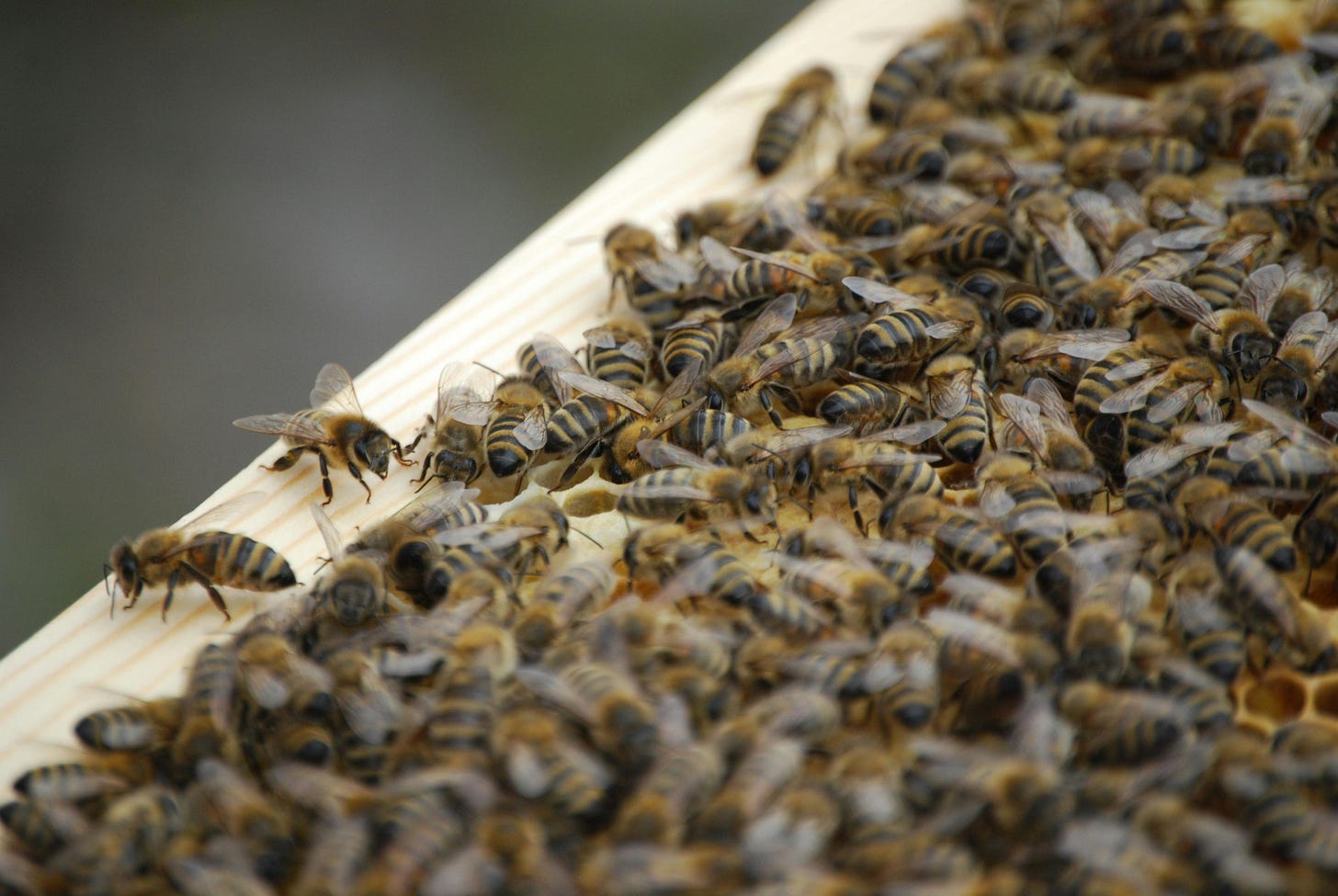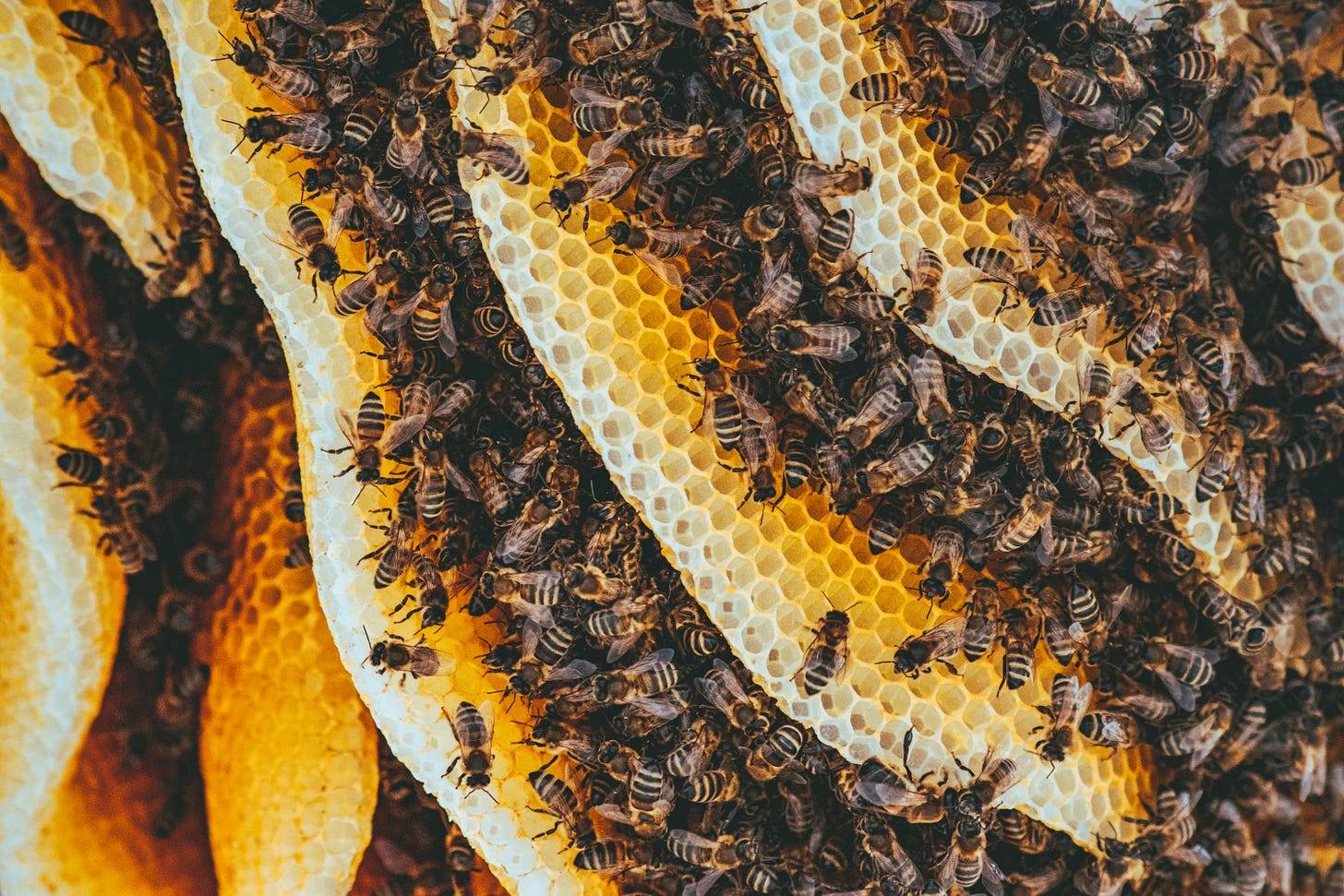What makes “genetic diversity” the key to healthy honeybee populations?
Genetic diversity isn't just a scientific research topic; it's an important concept for beekeepers who'd like to have long-term success in their bee yards.
After gaining some experience in the bee yard and taking note of what you see throughout the season, you’ll start to discover subtle trends that occur within your colony, especially those that can impact their health, productivity, and resilience. One important part of the science of beekeeping that can greatly impact all these things is the genetic diversity among your honeybee colony and honeybee populations in general.
Though there are certainly genetic differences between different types of bees in general, honeybee populations can be greatly affected by genetic diversity among not just individual bees, but different colonies, too.
Looking at the Science Behind Genetic Diversity in Honeybees
Ensuring genetic diversity among honeybees may sound like something that bees can handle on their own. While that is somewhat true, it’s still a very important part of beekeeping to understand because beekeepers can affect bees’ ability to maintain diversity within the colony, even without intending to.
Diverse genetics among honeybees can help ensure healthier populations by increasing disease resistance and hygienic behaviors (like those that help bees manage varroa mite levels) and can also help colonies to have better abilities in adapting to and surviving through stressful situations.
The Strategic Honeybee Reproduction Process
Though the way that honeybees complete the actual act of mating is like that of other animal species, the way that they pass on chromosomes to future generations is vastly different. To preserve genetic diversity within the colony, a queen bee will mate with multiple drones from other colonies, leading to half-sisters with different fathers from across various apiaries. This helps to increase diversity not just within your beehive(s), but throughout the entire population of honeybees in your area.
After the queen has finished taking her mating flights, she’ll store sperm from various drones to use for fertilizing the eggs of female bees (those destined to become either workers or queens) later. Male bees, or the drones, are born from unfertilized eggs. This sex-determination process is referred to as “haplodiploidy”, with drones being referred to as “haploid” and female bees as “diploid” *.
*Colony members, learn more with our in-depth Academy lesson on Honeybee Genetics!
Consequences of Low Genetic Diversity
When genetic diversity is limited, or becomes so, it’s not just the current bees who are at risk of being affected, but future generations of bees, too.
Diversity limitations can be a risk to honeybees in many ways, but primarily cause:
Lowered immunity and increased susceptibility to pests, parasites, and diseases.
A lower chance of overwintering success.
Decreased ability to forage and store resources.
Lessened honey production.
Inbreeding and reduced queen fertility.
Over time, limited genetic diversity puts the whole colony under strain by putting the current population, AND subsequent generations, at risk of weakened immune systems and contracting the same disease. This can be totally devastating and may cause the entire colony to perish, no matter how healthy they had been previously.
Human Influence on Honeybee Genetics
Queen rearing isn’t something that’s often done by new beekeepers. However, any beekeeper who’s new to queen rearing should take the time to understand the science behind it, or they risk holding their colonies back by weakening their genetics and immunity.
Some beekeepers choose to rear their own queens with the specific process of impacting genetics in mind, especially those involved in commercial honey or pollination operations. Because some races or genetic lines of bees have traits that may lead to an increase in their productivity (or other favorable behaviors), queen breeders may select queens from just one genetic line to (hopefully) end up with more bees with those traits.
In turn, this severely limits their genetic diversity, and though bees born from these queens initially may have the favored aesthetics or other traits, future generations may suffer in various ways.
Importing honeybee queens that are a different species results in bees born with a healthier mix of genes and behaviors. Hybridization (or the crossing of subspecies) may not sound ideal as it results in bees who lose some of the “pure” species’ traits and are considered “mutts”. But in reality, it can be quite beneficial to populations in the long term as it aids in increased diversity and adaptability across the entire population.
Promoting and Preserving Genetic Diversity
Honeybees naturally work quite hard to ensure their genetics remain diverse; that’s why many drone bees hang out at “congregation areas” to wait for their chance at mating with a queen from a different colony.
As beekeepers, there are a few things that we can do to help them with this goal:
Source replacement queens from multiple different, yet reputable breeders.
When possible, support regional stock and survivor stock programs.
You may also be able to participate in (or support) regional breeding cooperatives.
Consider joining your local beekeeping club to learn more about what’s available in your area and click here to read more from the USDA.
If you’re breeding honeybee queens, especially to sell to other beekeepers, genetic testing IS available to ensure you’re helping maintain diversity among your queens.
Diversity can also be managed by instrumental insemination of new honeybee queens.
A Long-Term Perspective
Being a good beekeeper and having a successful hobby (or commercial operation) is all about knowing not just how to help and protect your bees’ health but also understanding the ways that you and your bees may impact future populations, too. Responsible beekeeping means being a part of the solution to the issue of less genetic diversity among honeybees.
As you gain experience and knowledge through your trips to your bee yard, you can help other beekeepers understand the importance of diverse honeybee genetics, too. Genetic diversity gives bees a much better chance at facing evolving pathogens and rapidly changing climate/weather patterns, which is important for beekeepers of every experience level and type of beekeeping practice.
Our bees are only as strong as the genes they pass along, so let’s work together & make them count!
In these excellent additions to your beekeeping bookshelf, find additional insights and advice: “Bee Sex Essentials” and “Mating Biology of Honeybees.”




